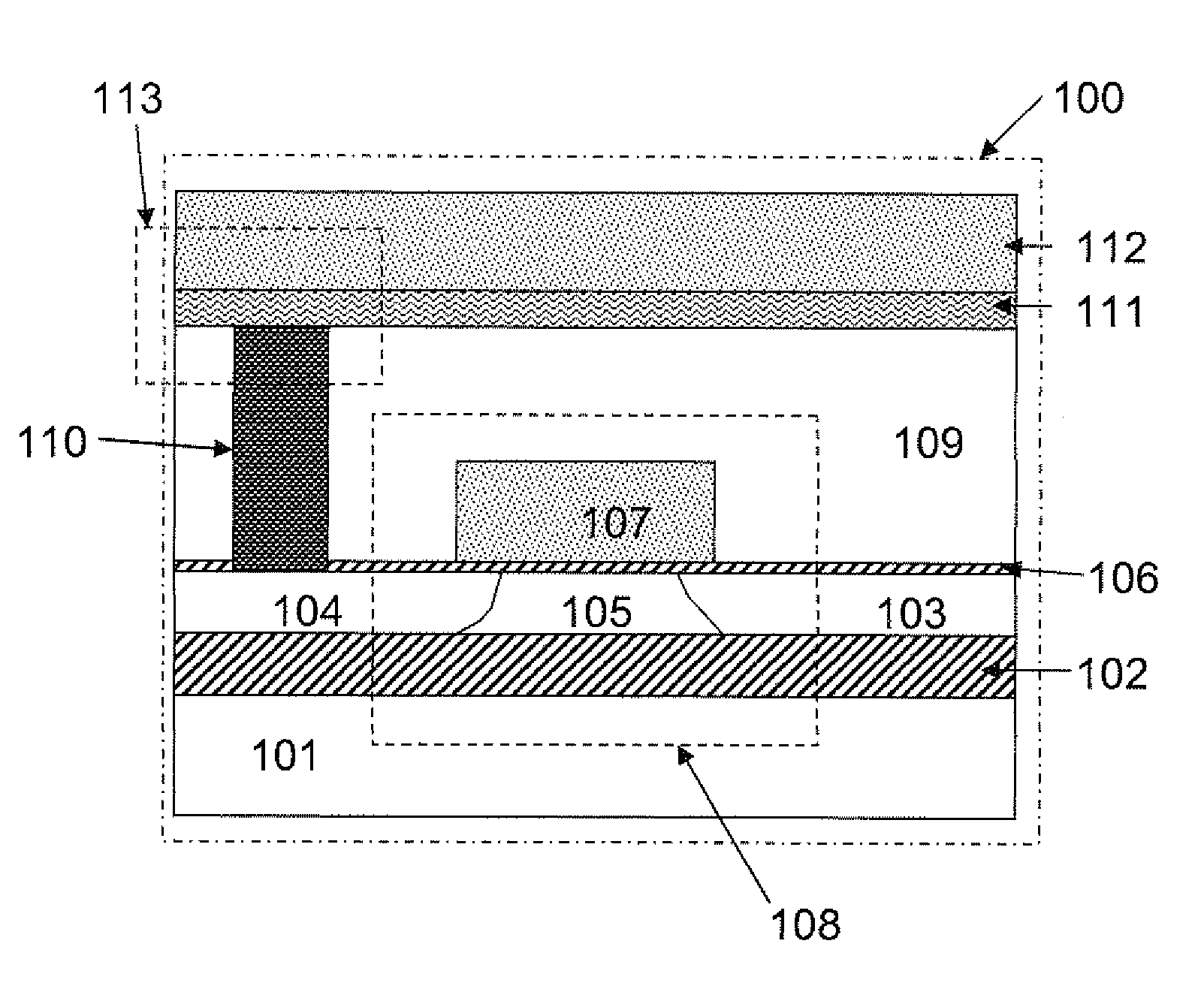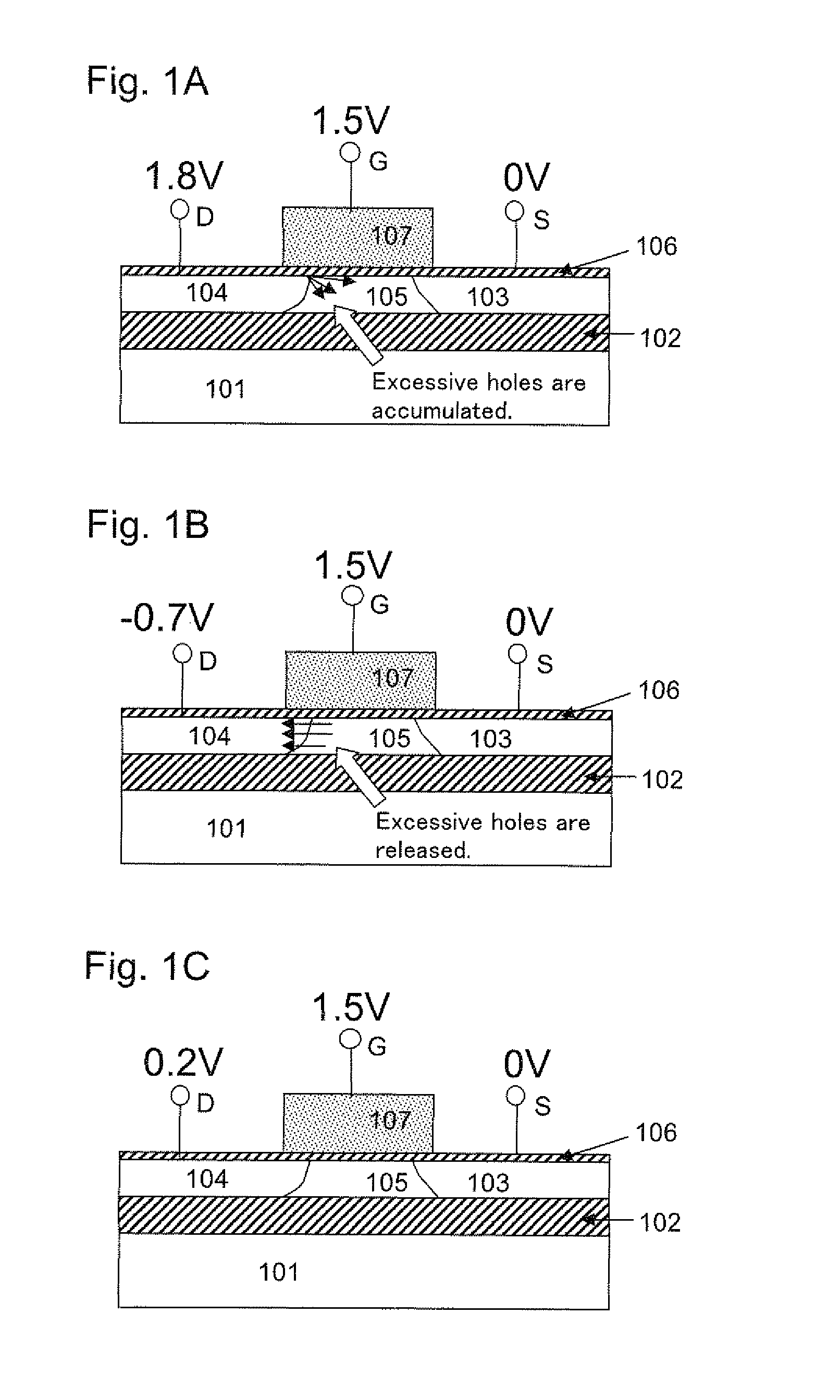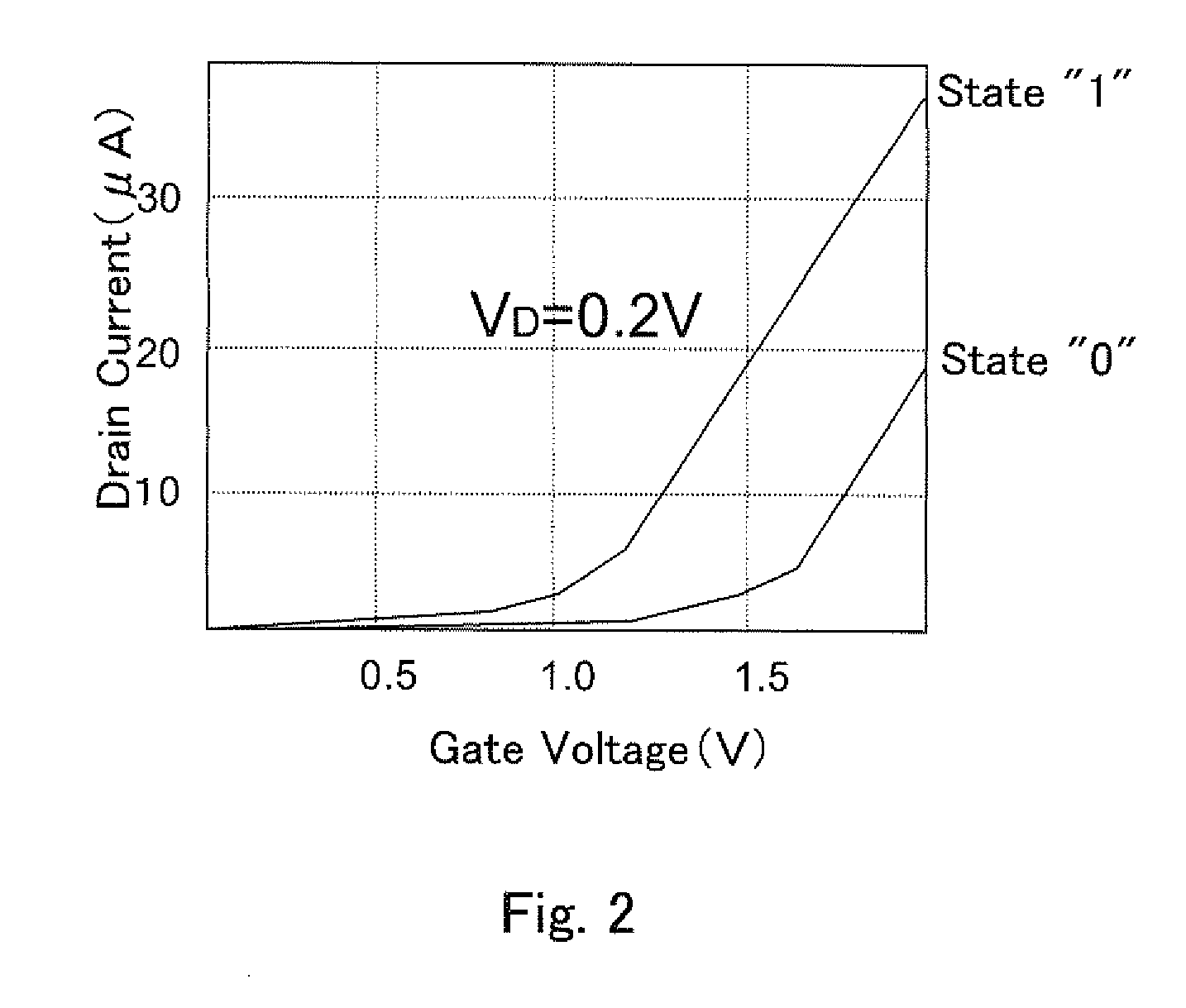Semiconductor memory device
a memory device and semiconductor technology, applied in semiconductor devices, digital storage, instruments, etc., can solve the problems of high cost, large area occupied by the device, and volatile memories that cannot hold data without power supply, and achieve the effect of low cost and high performan
- Summary
- Abstract
- Description
- Claims
- Application Information
AI Technical Summary
Benefits of technology
Problems solved by technology
Method used
Image
Examples
first embodiment
[0089]FIG. 5 is a cross-sectional diagram showing the structure of a memory cell 100 in the semiconductor memory device according to the first embodiment of the present invention. An insulating film (silicon oxide film) 102 is formed on a silicon substrate 101, and an n type source region 103, an n type drain region 104 and a p type channel body region 105 of a MISFET 108 are formed in the semiconductor layer (SOI substrate), which is electrically isolated from the semiconductor substrate 101 by means of the insulating film 102. A gate electrode 107 is formed above the channel body region 105 with a second insulating film 106 in between. An interlayer insulating film 109 is formed over the MISFET 108, and a contact hole is created in the interlayer insulating film 109 for contact on the upper surface of the drain region 104, and the contact hole is filled in with a contact plug 110. The contact plug 110 is formed by combining a barrier metal of Ti / TiN and W, which is the same as gen...
second embodiment
[0109]The semiconductor memory device according to the present invention operates in accordance with the above described operation method, and thus, a nonvolatile semiconductor memory device where random write and readout are possible an unlimited number of times can be provided. The system configuration is shown in the following.
[0110]As shown in FIG. 18, the semiconductor memory device system according to the present invention is formed of a memory cell array 201 which is formed in accordance with the first embodiment of the present invention, a word decoder 202 which is connected to the word lines of the memory cell array 201 and driven by selecting the memory cells within the memory cell array 201 in the row direction, a sense amplifier 203 which is connected to the bit lines of the memory cell array 201, a column decoder 204 for selecting the memory cells within the memory cell array 201 in the column direction, and an interface control circuit 205 for controlling the voltage a...
third embodiment
[0112]FIG. 19 shows the structure of the semiconductor memory device (memory cell array) according to the third embodiment of the present invention, and FIGS. 20A and 20B show the structure in a cross section. FIGS. 20A and 20B are cross-sectional diagrams along A-A′ and B-B′, respectively, in FIG. 19. FIG. 21 shows an equivalent circuit of the structure in FIGS. 19, 20A and 20B. The third embodiment is different from the first embodiment in that the MISFETs having a channel body, which is electrically isolated from the semiconductor substrate, are provided as vertical transistors with the channel body region covered with an insulating film.
[0113]Vertical transistors in column form are formed in the direction of the depth such that n type source regions 302, p type channel body regions 303 and n type drain regions 304 are formed on top of a p type semiconductor substrate 301 in this order. Herein, the source regions are connected in the row direction (A-A′ direction), so that source...
PUM
 Login to View More
Login to View More Abstract
Description
Claims
Application Information
 Login to View More
Login to View More - R&D
- Intellectual Property
- Life Sciences
- Materials
- Tech Scout
- Unparalleled Data Quality
- Higher Quality Content
- 60% Fewer Hallucinations
Browse by: Latest US Patents, China's latest patents, Technical Efficacy Thesaurus, Application Domain, Technology Topic, Popular Technical Reports.
© 2025 PatSnap. All rights reserved.Legal|Privacy policy|Modern Slavery Act Transparency Statement|Sitemap|About US| Contact US: help@patsnap.com



